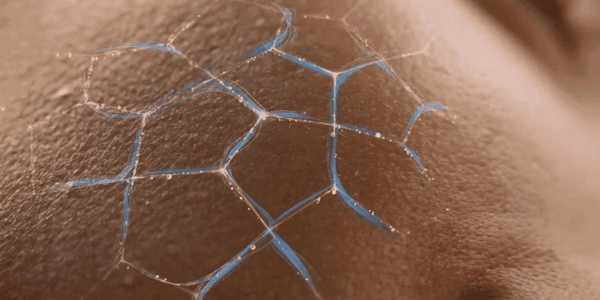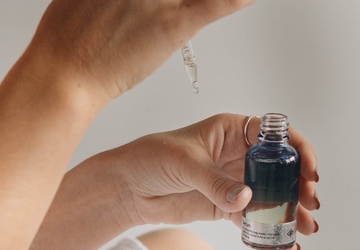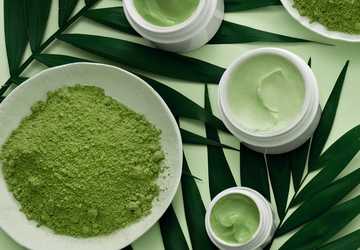Debunking The Myths: Chemical Peels Vs Natural Exfoliants
In the pursuit of flawless skin, the debate between chemical peels and natural exfoliants has been ongoing. Both methods promise to rejuvenate the skin, but which is better? The purpose of this post is to dispel the misconceptions surrounding chemical peels versus natural exfoliants and offer a thorough comparison so that you can make an informed choice.
This post aims to dispel the misconceptions surrounding chemical peels and natural exfoliants and offer a thorough comparison so that you can make an informed choice.
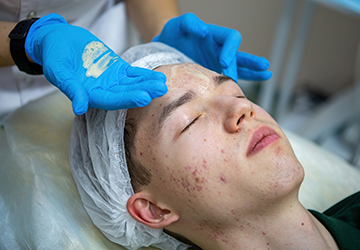
Understanding Chemical Peels
A chemical peel involves applying a solution to the skin, which eventually causes the outer layer to blister and peel off. The skin's surface appears smoother and less wrinkled after this process. Based on their intensity, chemical peels can be divided into three categories:
1. Superficial Peels: These use mild acids like alpha-hydroxy acid to exfoliate gently.
2. Medium Peels penetrate deeper into the skin, using glycolic or trichloroacetic acid to reach the middle layers.
3. Deep Peels: These are the strongest, penetrating the skin deeply with phenol or trichloroacetic acid.
Chemical peels are especially useful in treating pigmentation problems, ageing signs, and acne scars. According to the American Society of Plastic Surgeons, their popularity has increased by 5% in recent years, indicating their growing acceptance and perceived effectiveness.
The Appeal of Natural Exfoliants
Natural exfoliants for skin use physical or enzymatic agents to slough off dead skin cells. Common natural exfoliants include:
1. Physical Exfoliants: These include scrubs made from sugar, salt, or ground coffee, which physically remove dead skin cells.
2. Enzymatic Exfoliants: These use natural enzymes from fruits like papaya and pineapple to break down dead skin cells without scrubbing.
Natural exfoliants are often favoured for their gentler approach and the absence of synthetic chemicals. They are also celebrated for being eco-friendly and suitable for regular use.
Chemical Peels vs. Natural Exfoliants: Which is better?
When considering which chemical peels are better than natural exfoliants, it's essential to weigh the pros and cons of each method.
Efficacy
· Chemical Peels
Highly effective for treating severe skin issues like acne scars, deep wrinkles, and hyperpigmentation. They offer more dramatic and longer-lasting results compared to natural exfoliants. Chemical peels can significantly reduce the appearance of acne scars by up to 70% after multiple sessions.
· Natural Exfoliants
It is best suited for maintaining healthy skin rather than correcting severe issues. Regular use can improve skin texture and brightness but may be needed more than deep skin concerns. A survey by the American Academy of Dermatology found that 60% of respondents preferred natural exfoliants for their gentle and noninvasive nature.
Safety
· Chemical Peels
There is a risk of side effects, especially with deeper peels. If not performed correctly, these can include redness, peeling, and even scarring. To minimize risks, chemical peels should be administered by a certified professional.
· Natural Exfoliants
Natural exfoliants are generally safer for all skin types, including sensitive skin. However, overusing physical exfoliants can lead to microtears in the skin. It is advisable to use natural exfoliants at most 2-3 times a week.
Cost
· Chemical Peels
These can be expensive, intense peels, which may require multiple sessions. A chemical peel can range from $150 for a superficial peel to over $3000 for a deep peel.
· Natural Exfoliants
More affordable and accessible. Many natural exfoliants can be made at home using kitchen ingredients, making them a cost-effective option for many people.
Chemical Peels for Acne Scars
Chemical peels are highly recommended for those struggling with acne scars. Chemical peels use acids that aid in the breakdown of the skin's outer layers, encouraging the production of new skin cells and lessening the visibility of scars. Glycolic acid peels, for instance, are particularly effective in treating post-inflammatory hyperpigmentation caused by acne.
Eighty per cent of participants in a clinical trial reported a significant decrease in acne scars following a series of glycolic acid peels. Because of this, chemical peels are the preferred procedure for people who want to enhance the look and feel of their skin.
Natural Exfoliants for Skin
Natural exfoliants offer a gentler approach to skincare. Ingredients like honey, oatmeal, and yogurt not only exfoliate but also provide additional benefits such as hydration and nourishment. Honey, for example, is a great option for skin prone to acne because of its well-known antibacterial qualities.
One of the advantages of natural exfoliants is their versatility. You can tailor your exfoliation routine to your skin's specific needs. For example, mixing sugar with coconut oil creates a moisturizing scrub ideal for dry skin, while a combination of ground coffee and yoghurt can help tighten and brighten the complexion.
Myths and Facts
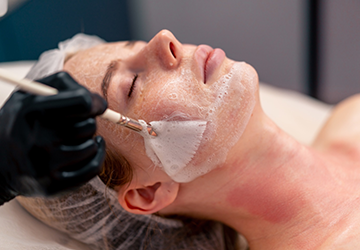
Photo by guys who shoot on Envato elements
Myth 1: Chemical Peels are Unsafe
Fact: Chemical peels are safe and effective when performed by a qualified professional. To minimize any risks, it's essential to follow pre- and post-treatment care instructions.
Myth 2: Natural Exfoliants Don’t Provide Significant Results
Fact: While natural exfoliants might not deliver the dramatic results of chemical peels, they are highly effective for regular maintenance and improving the skin's overall health. Many people see noticeable improvements in skin texture and brightness with consistent use.
Myth 3: Chemical Peels are Only for Aging Skin
Fact: Chemical peels suit various skin issues, including acne scars, sun damage, and pigmentation. They are not limited to anti-ageing treatments alone.
Myth 4: Natural Exfoliants Can Be Used Daily
Fact: Over-exfoliating with natural scrubs can damage the skin barrier. To avoid irritation and microtears, it's best to limit exfoliation to 2-3 times per week.
Conclusion
The debate about chemical peels vs. natural exfoliants largely depends on your skin's needs and goals. Chemical peels offer powerful results for those dealing with significant skin concerns like acne scars and deep wrinkles. They are best performed by professionals to ensure safety and efficacy. On the other hand, natural exfoliants provide a gentler, more holistic approach to maintaining healthy skin. They are ideal for those looking for a cost-effective, eco-friendly option for regular skincare.
Ultimately, the choice between chemical peels and natural exfoliants is personal. Knowing the advantages and drawbacks of each technique will enable you to choose the best course of action for your skin's particular needs.
